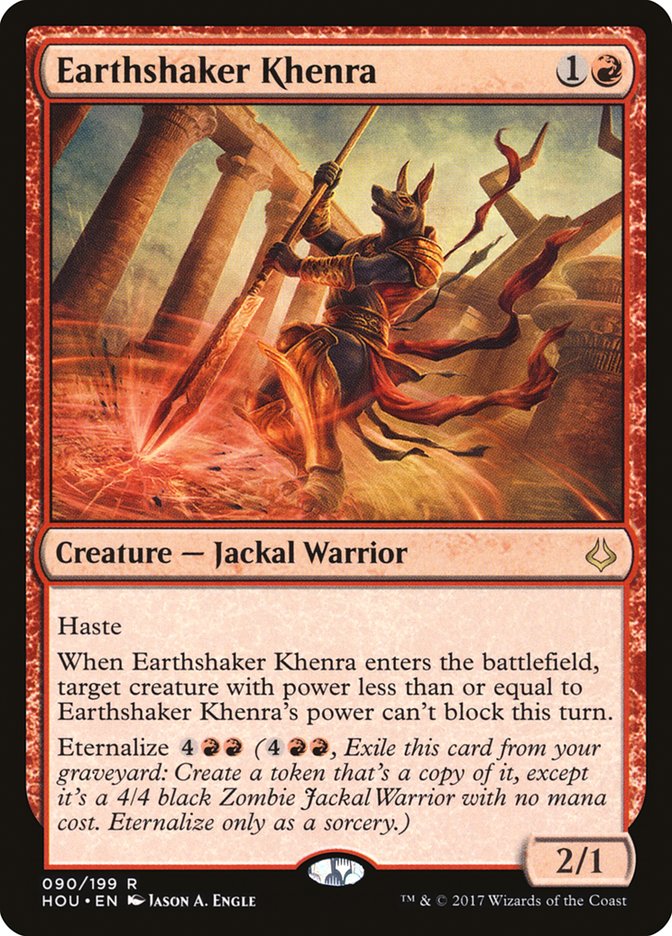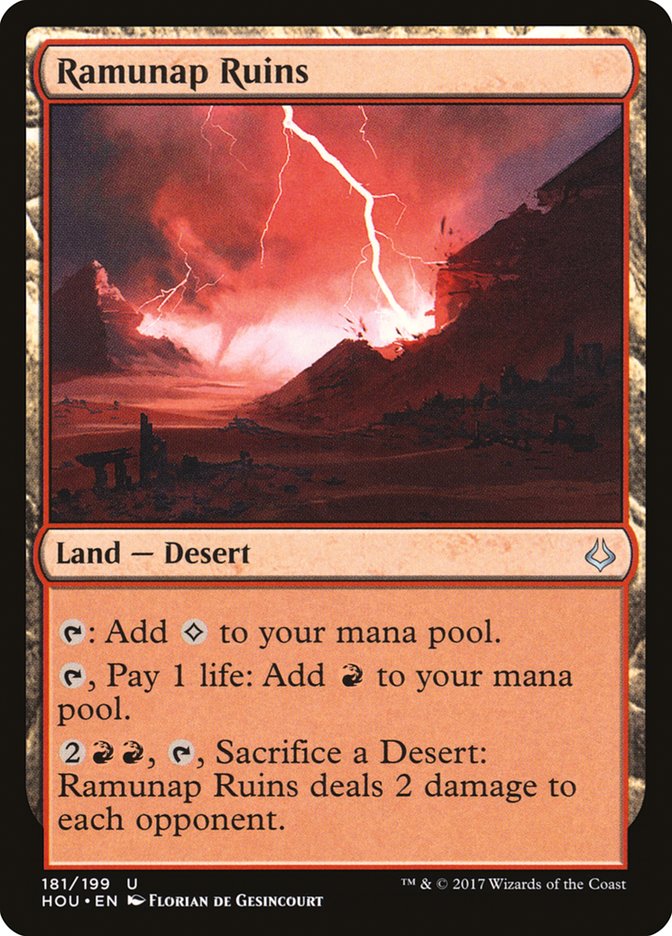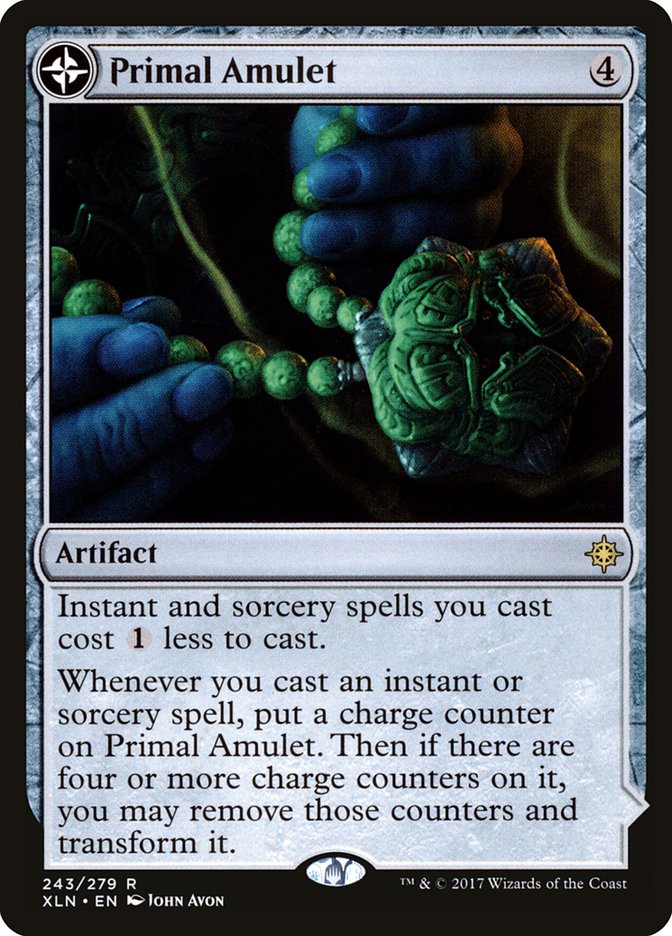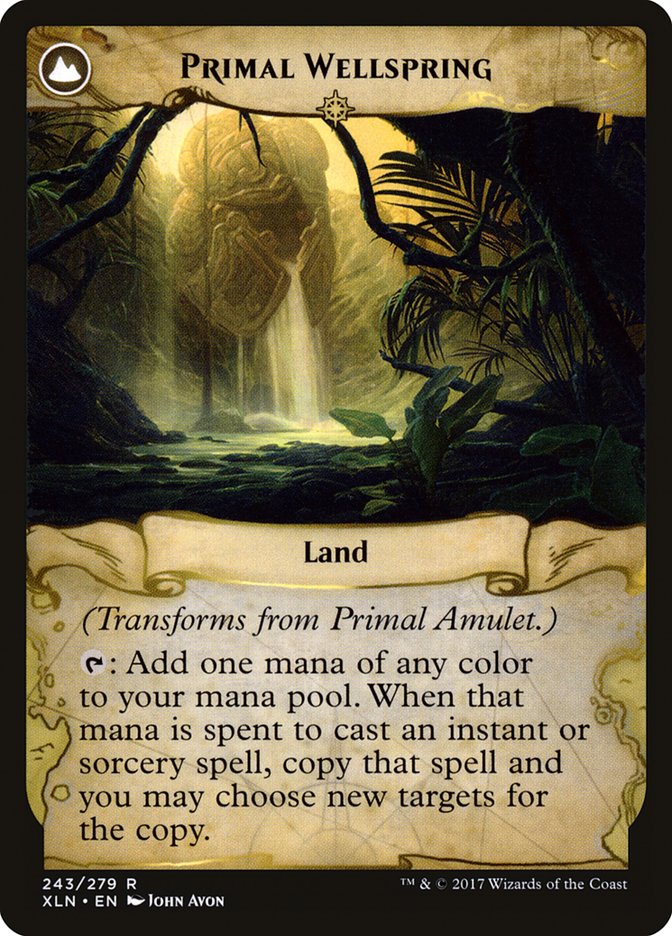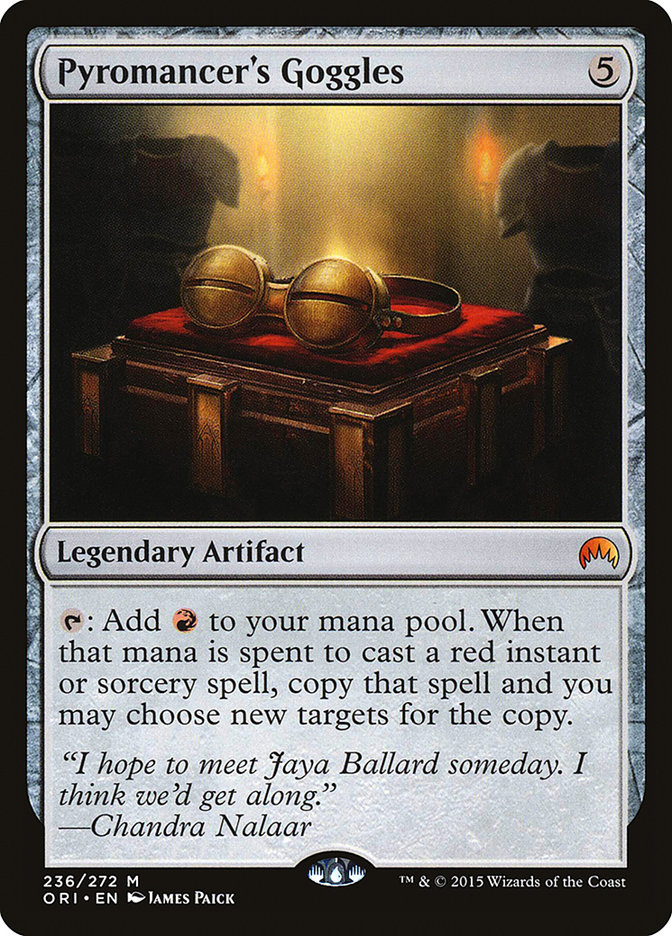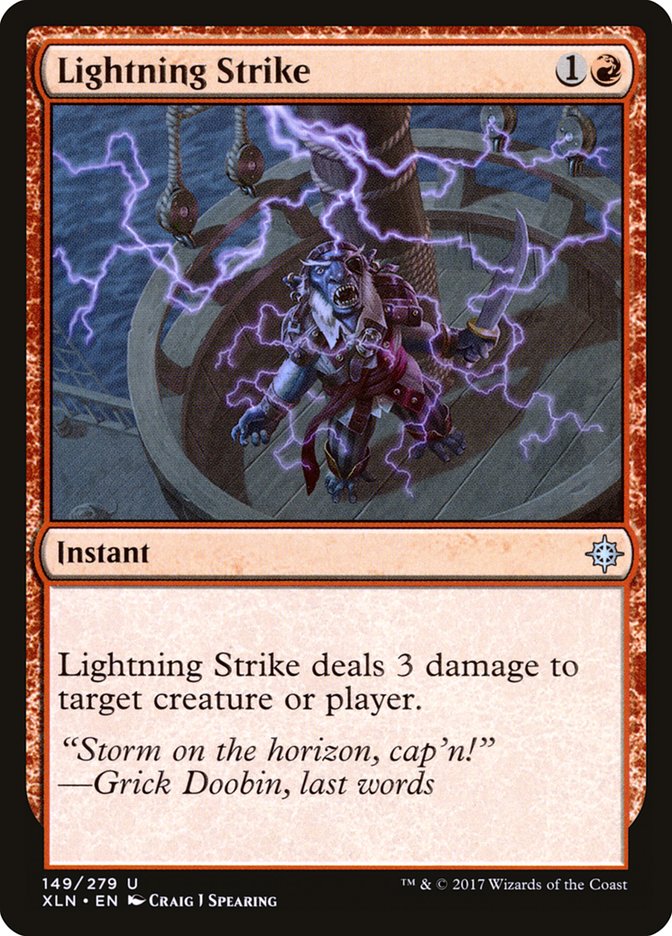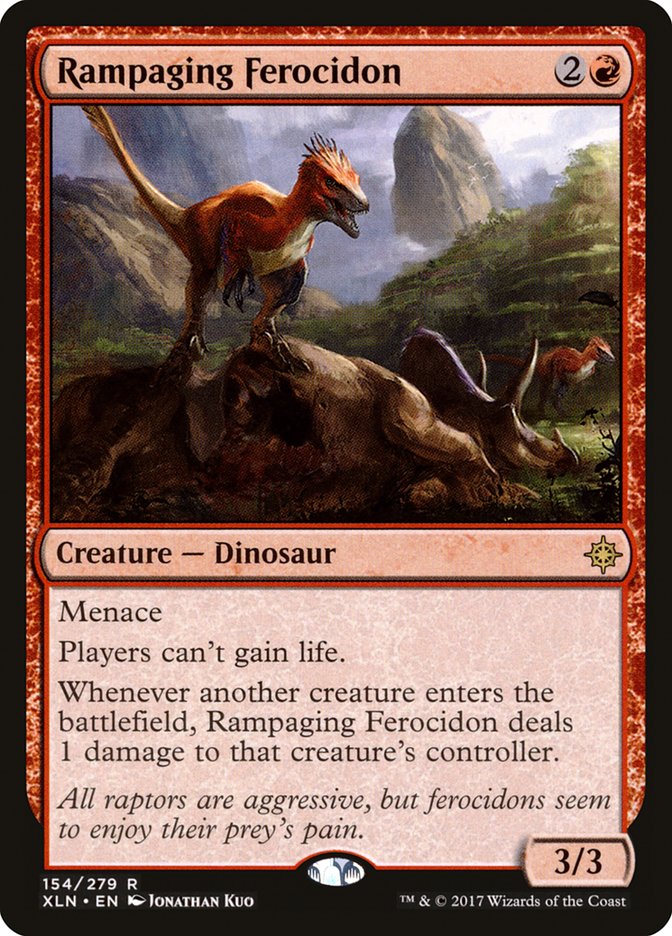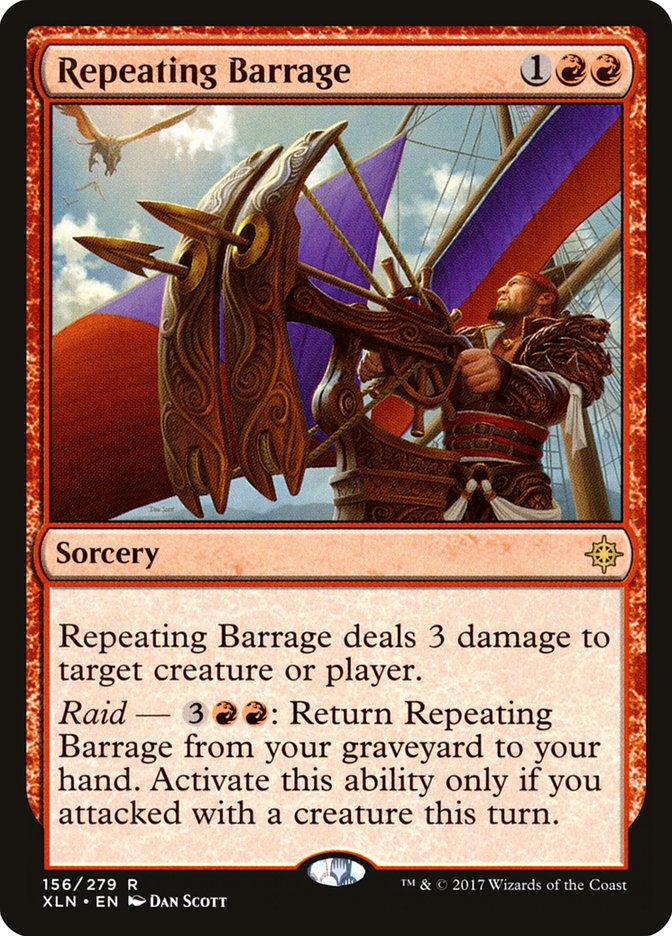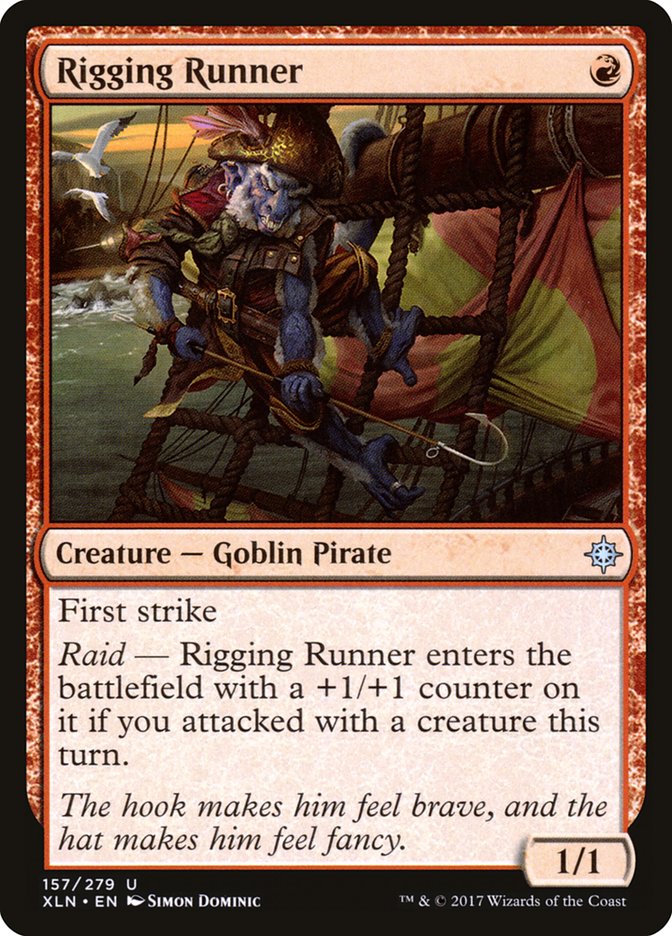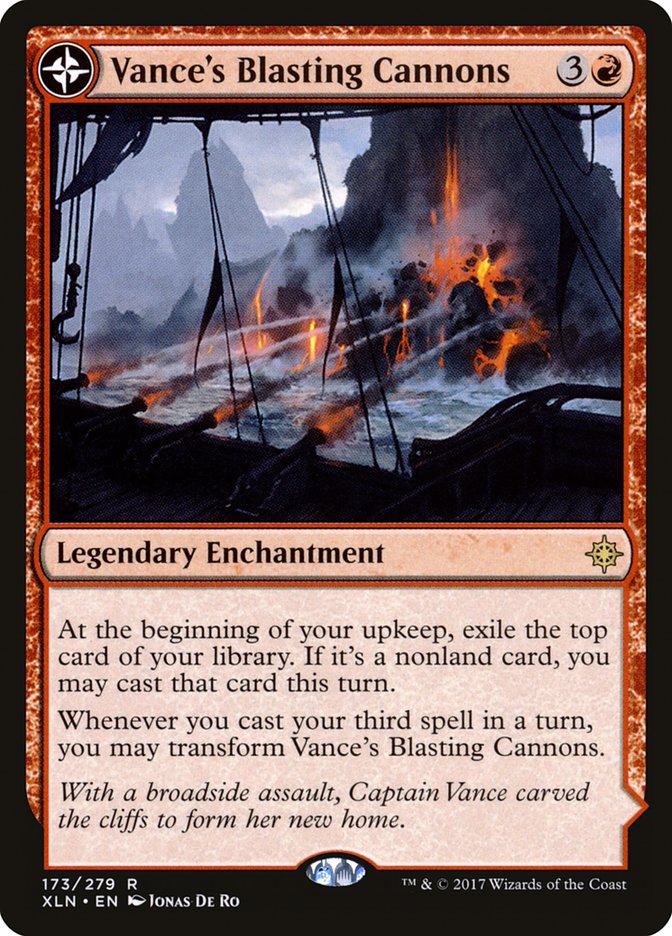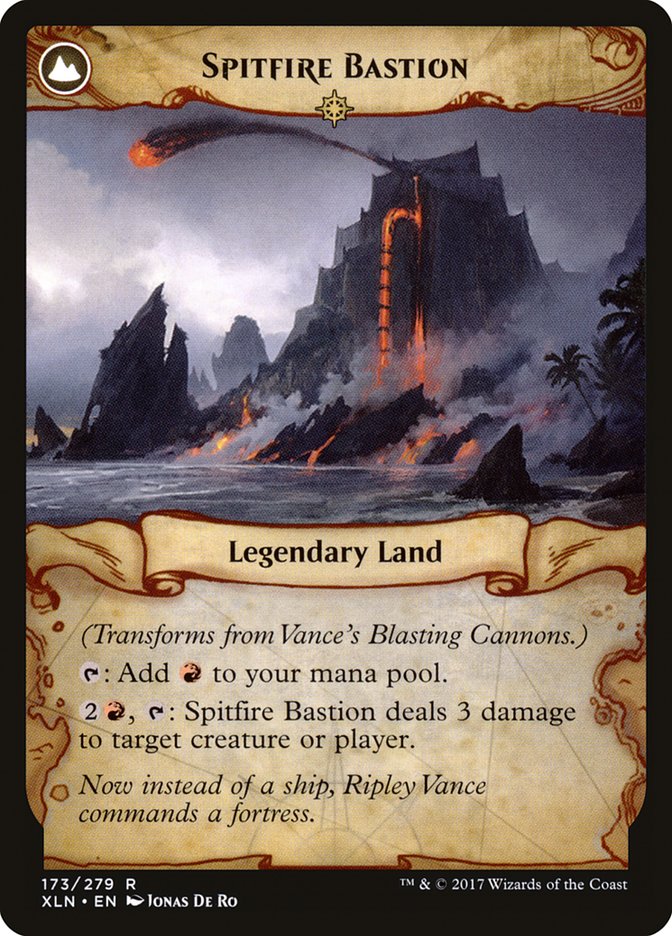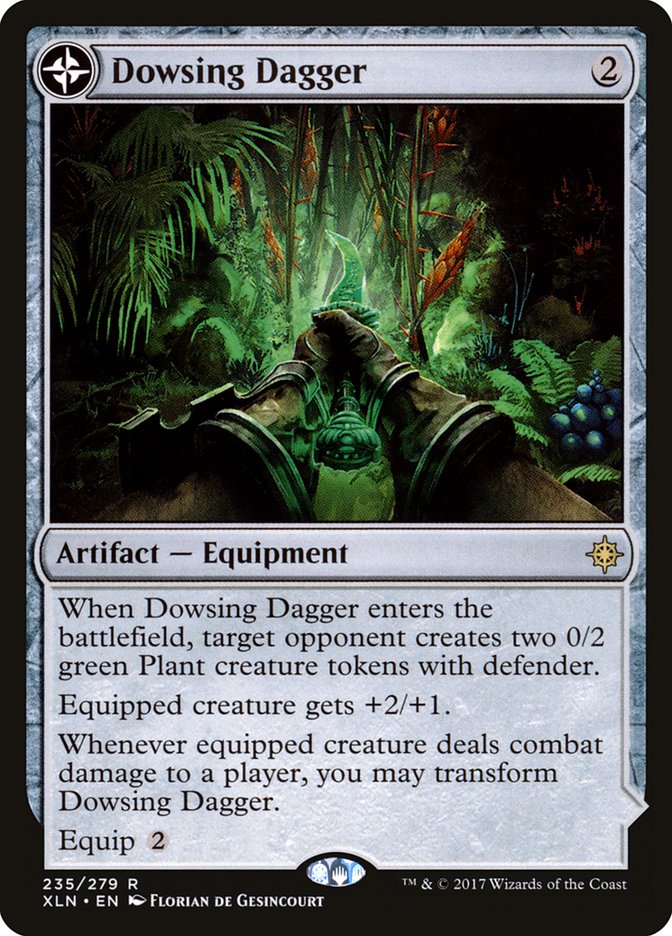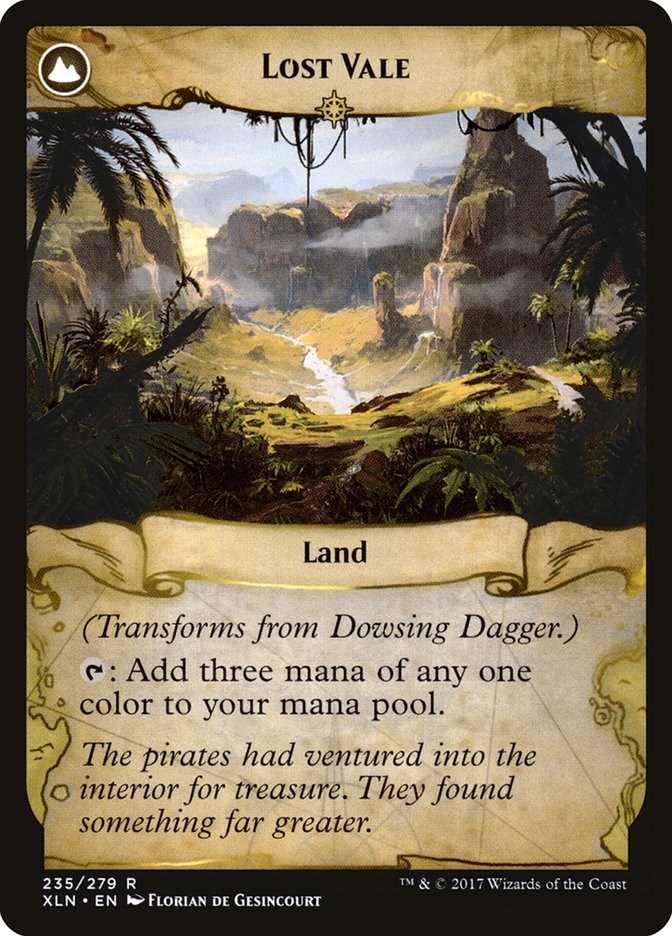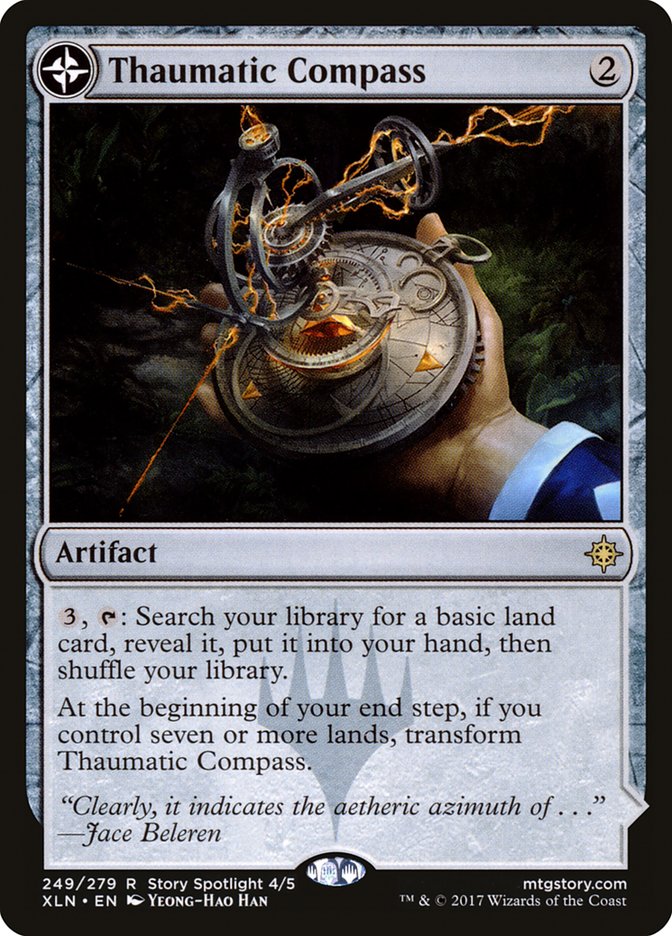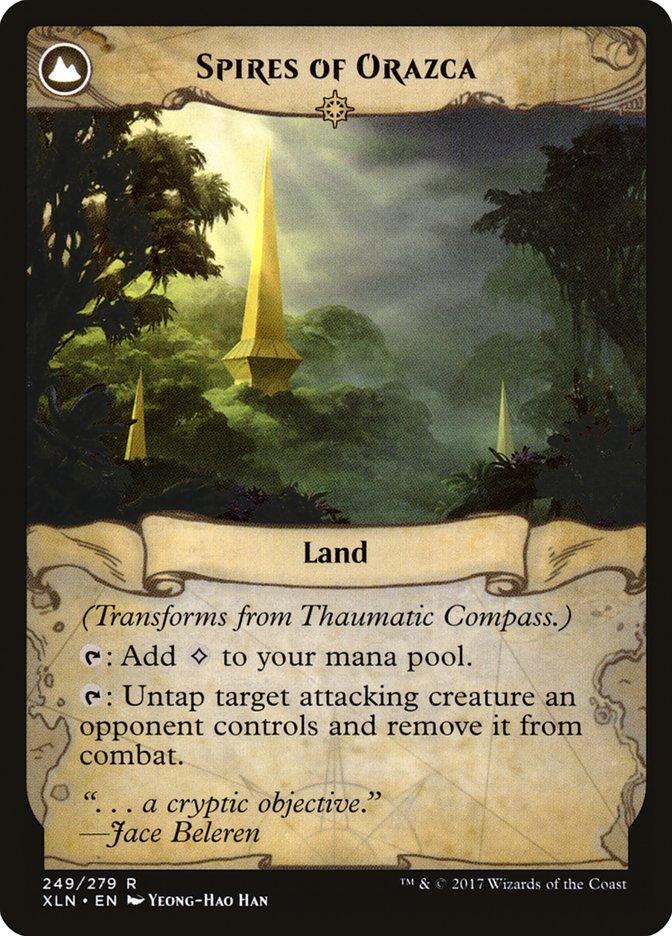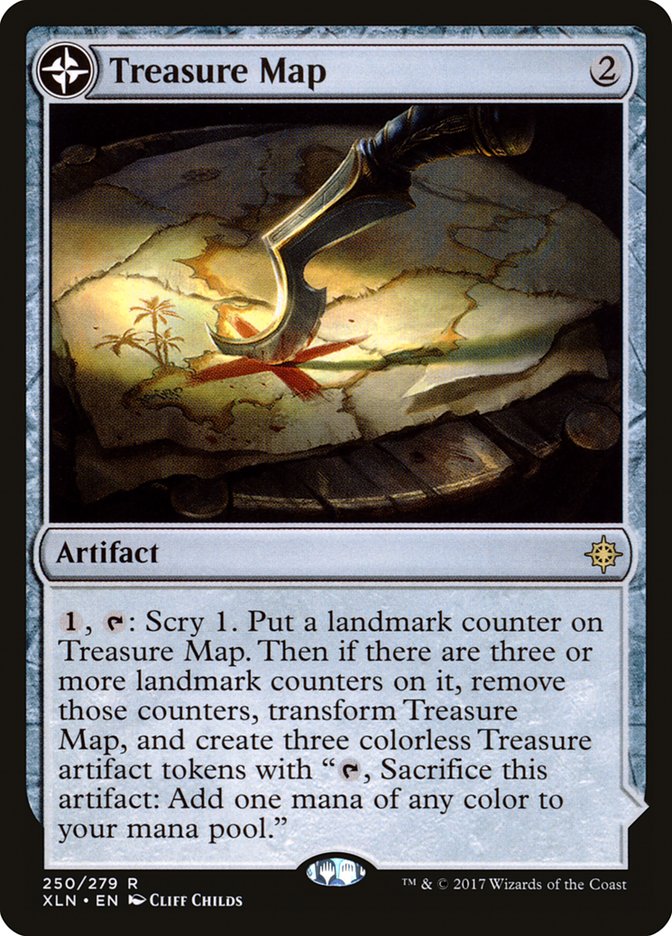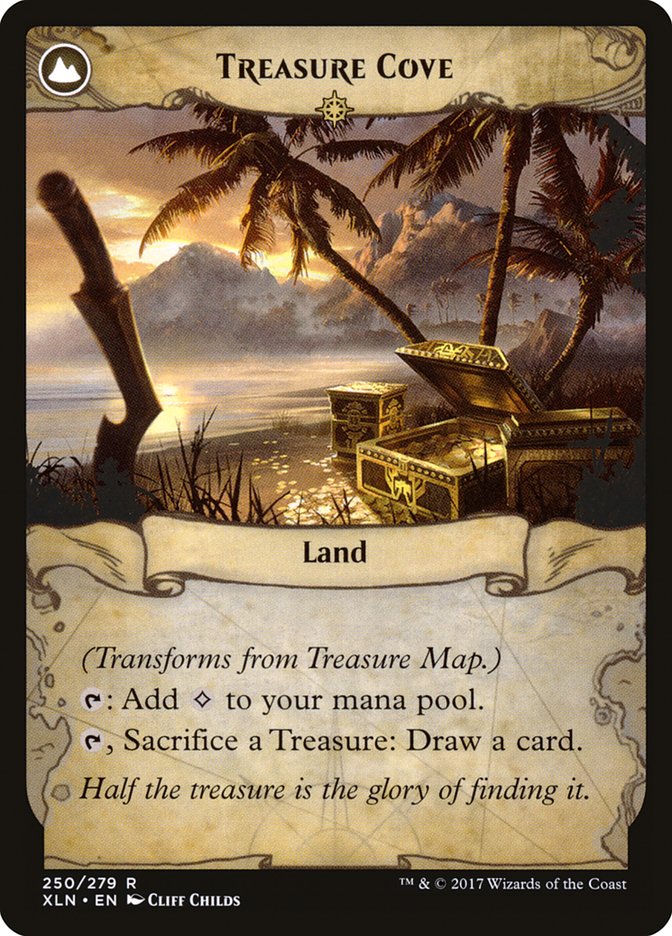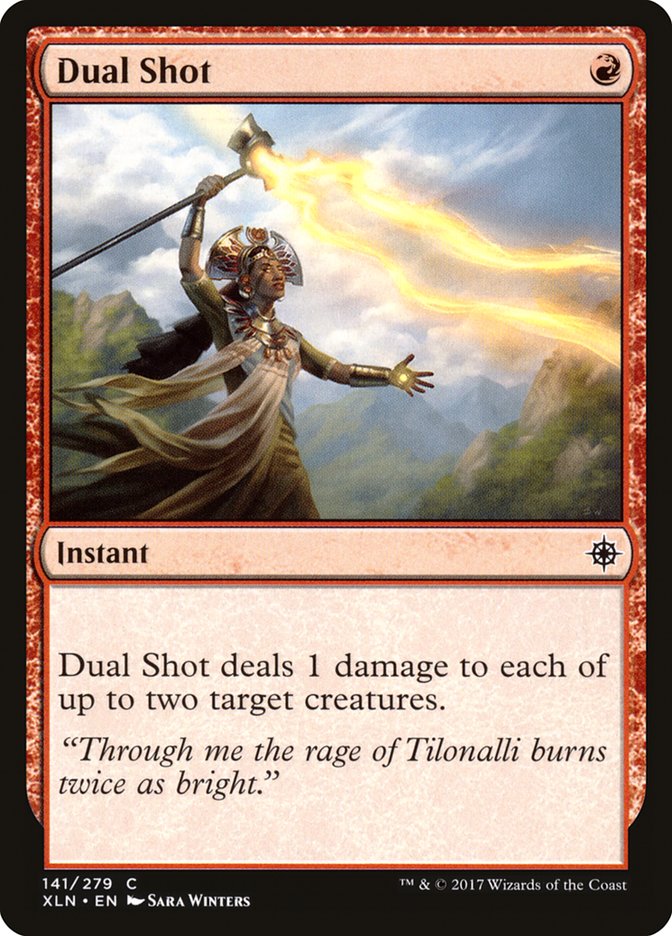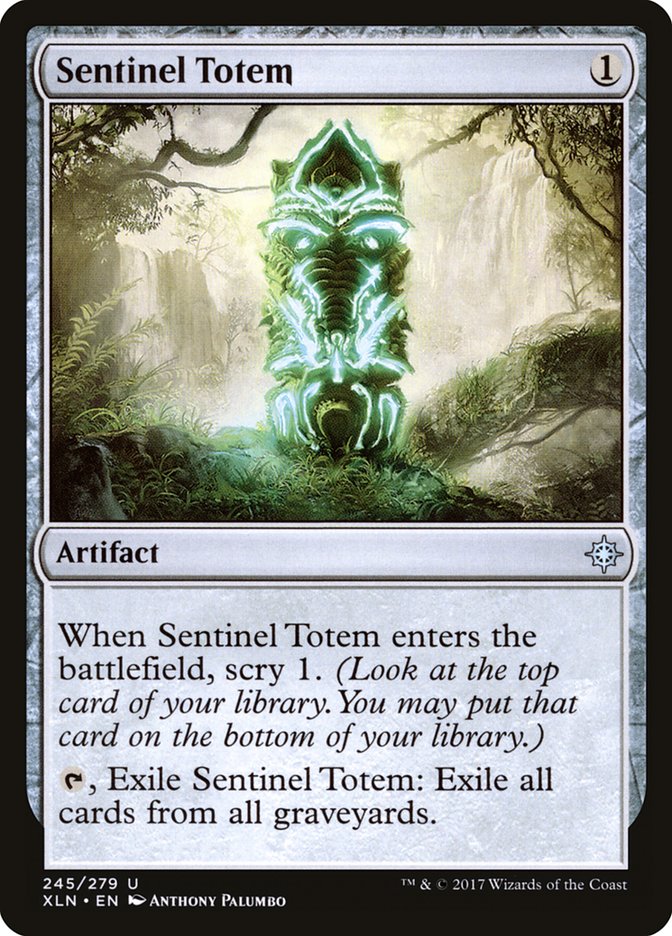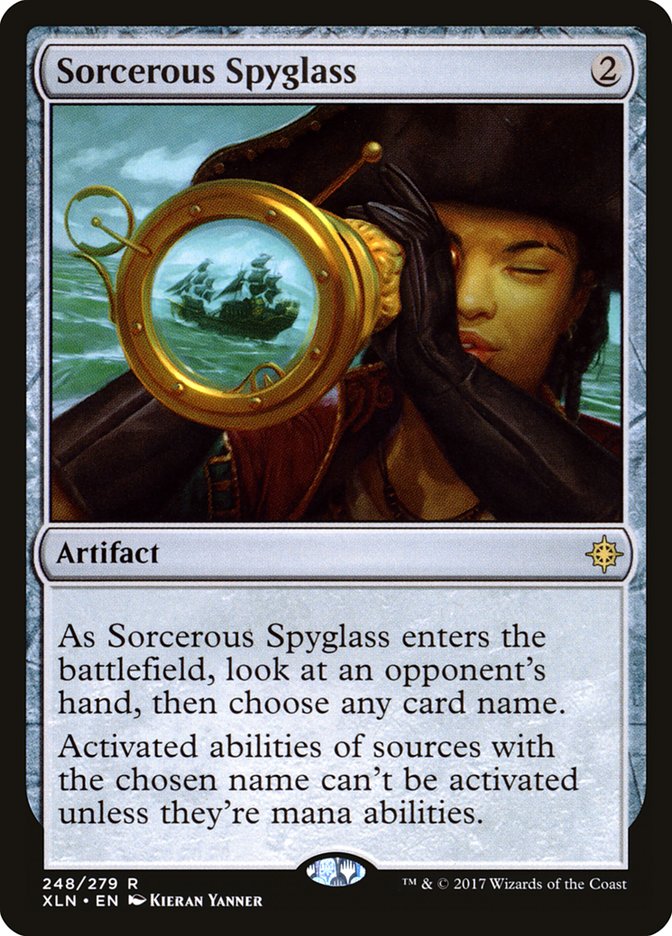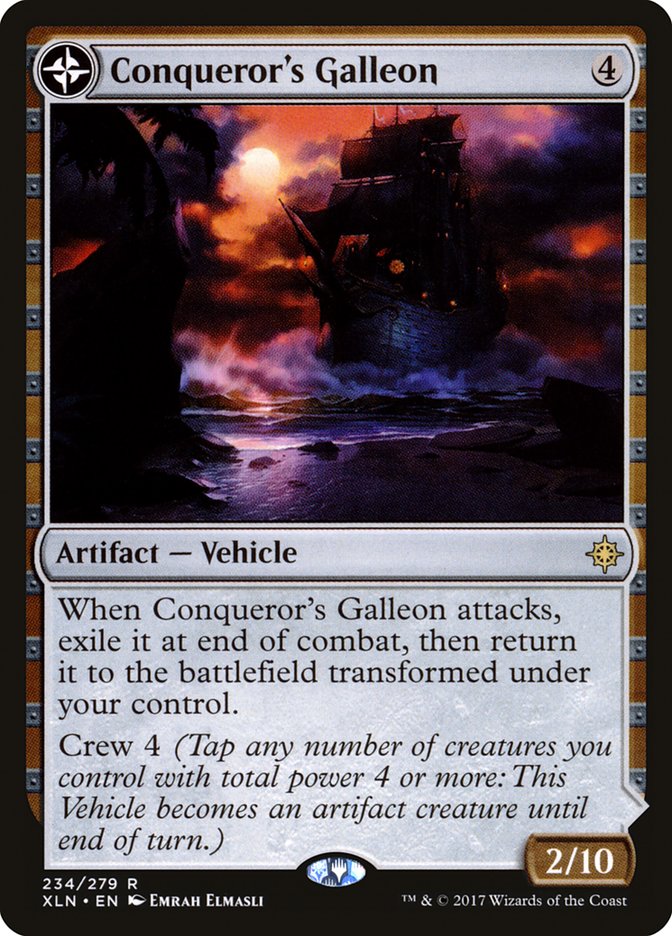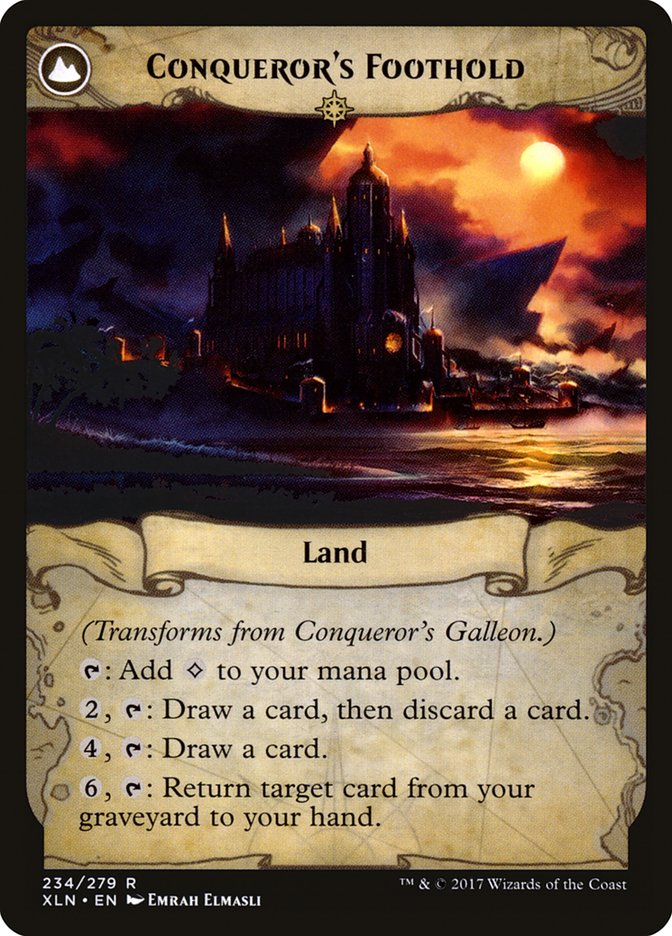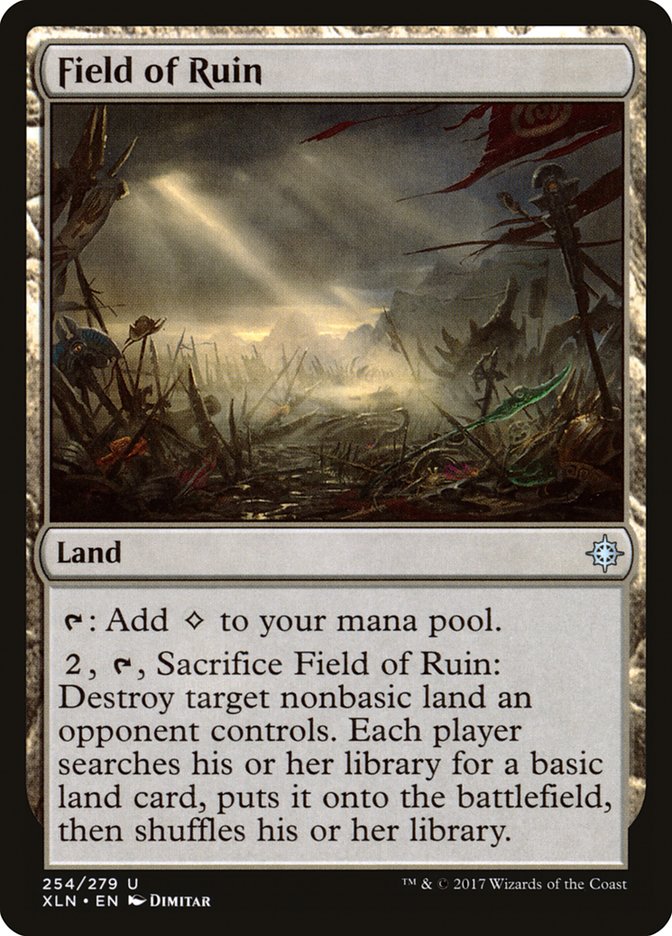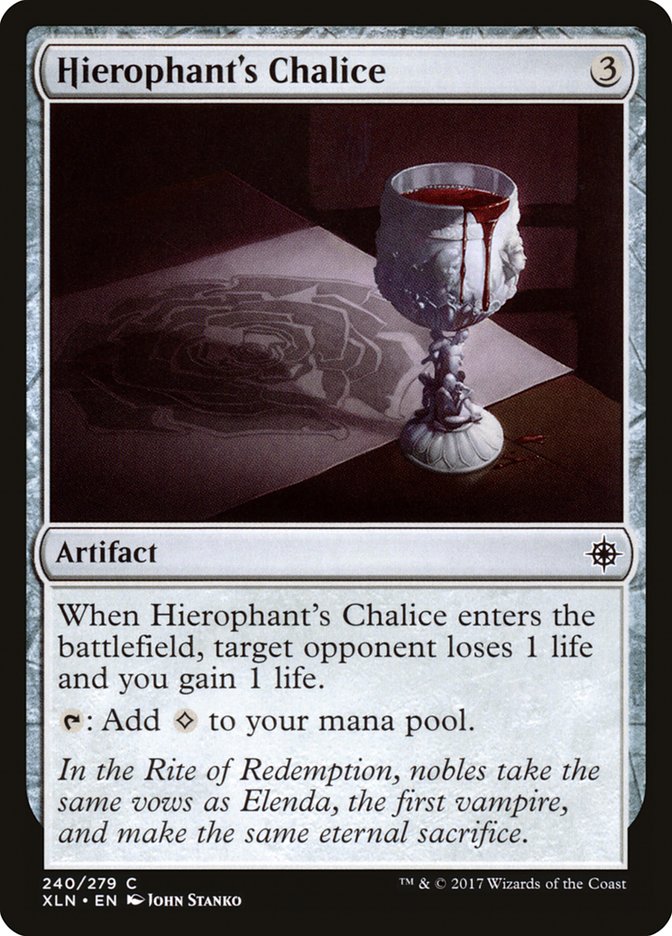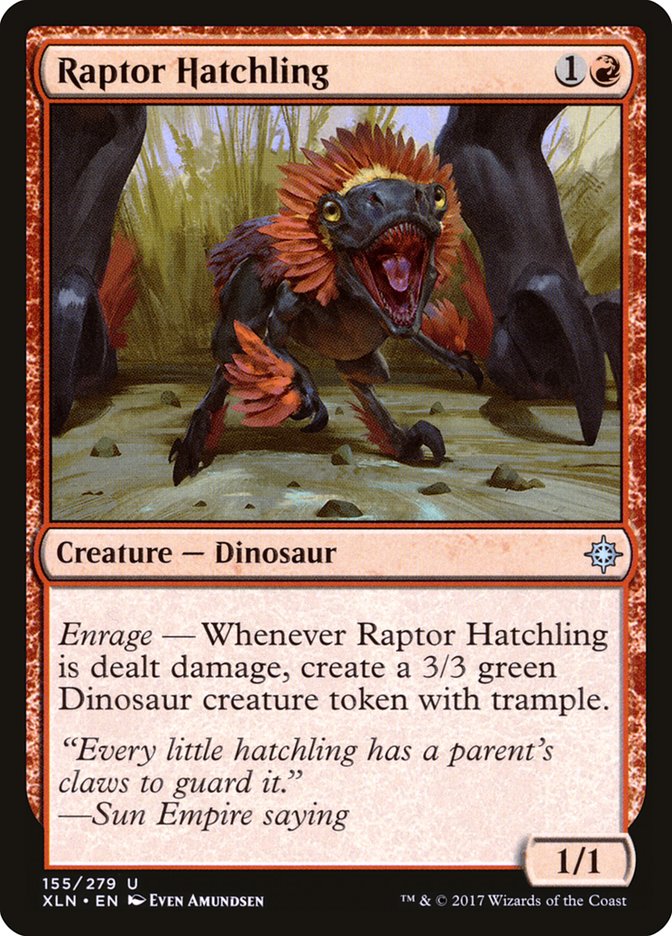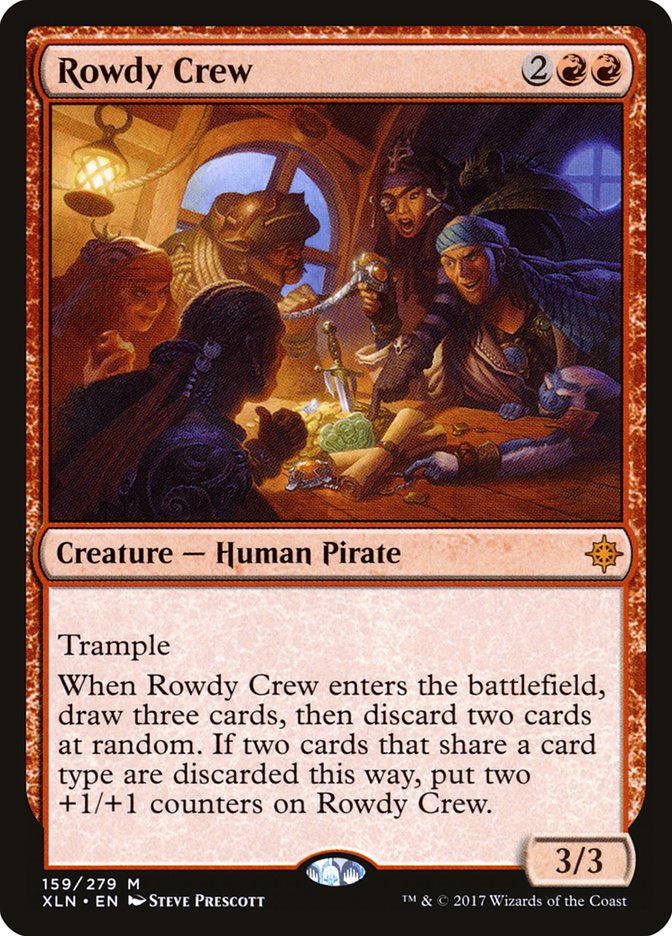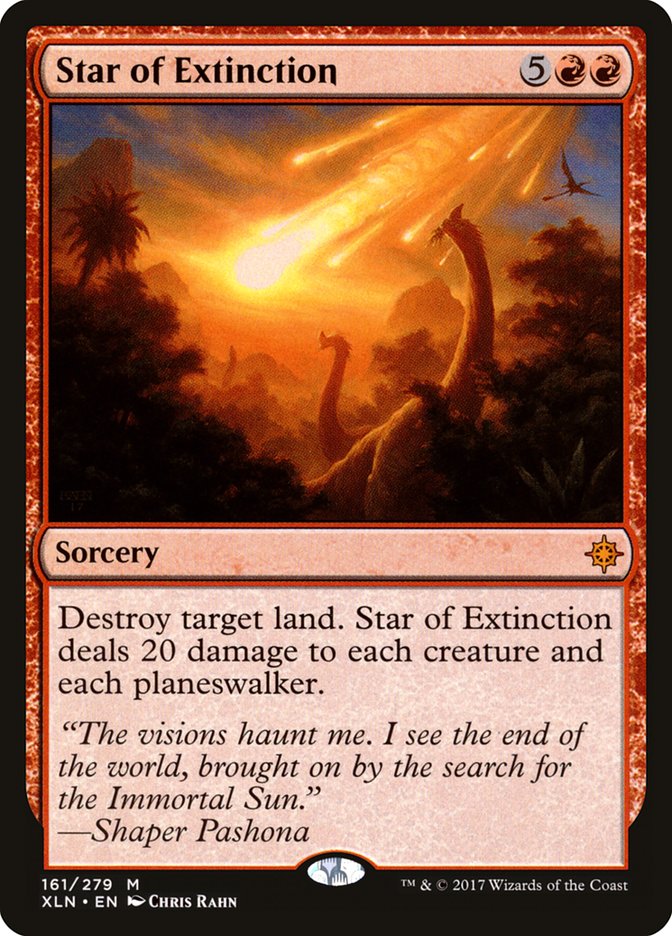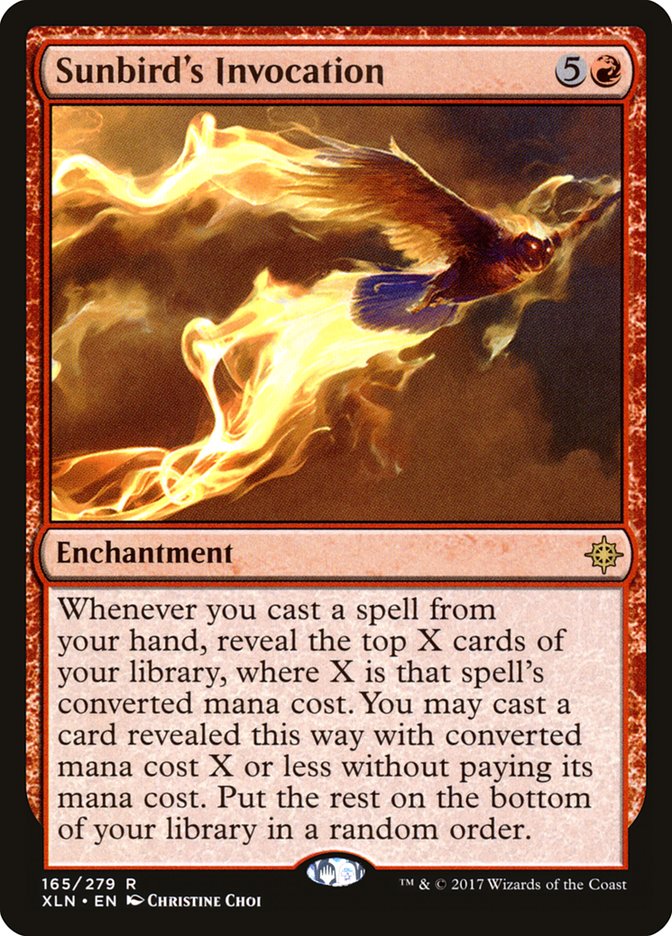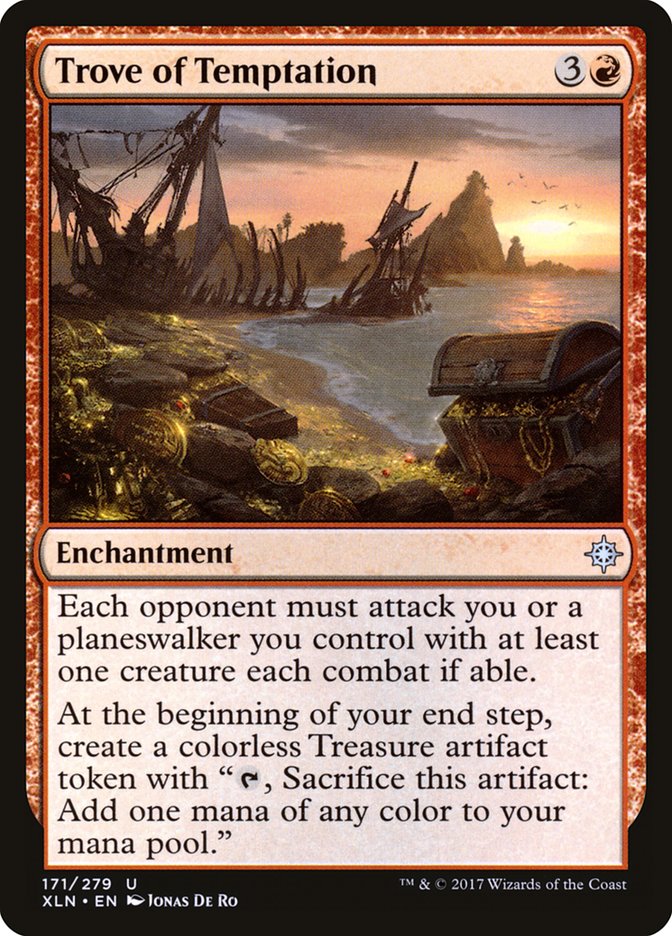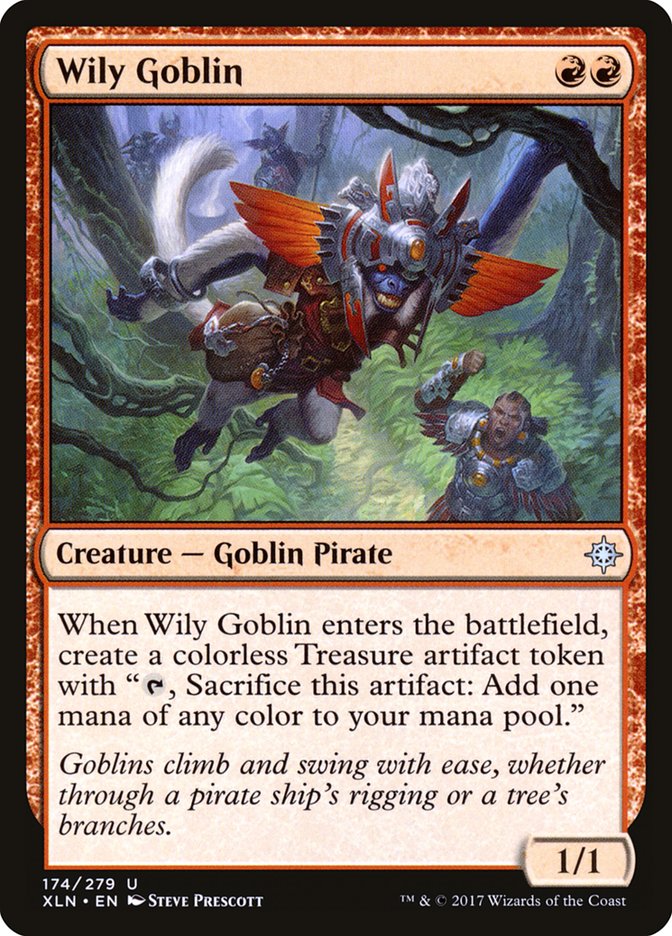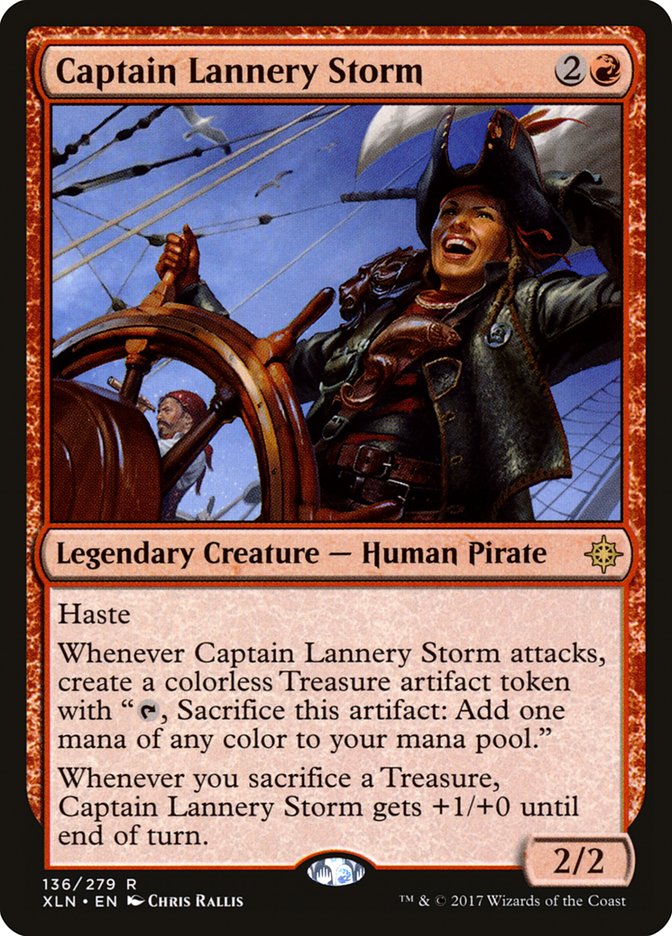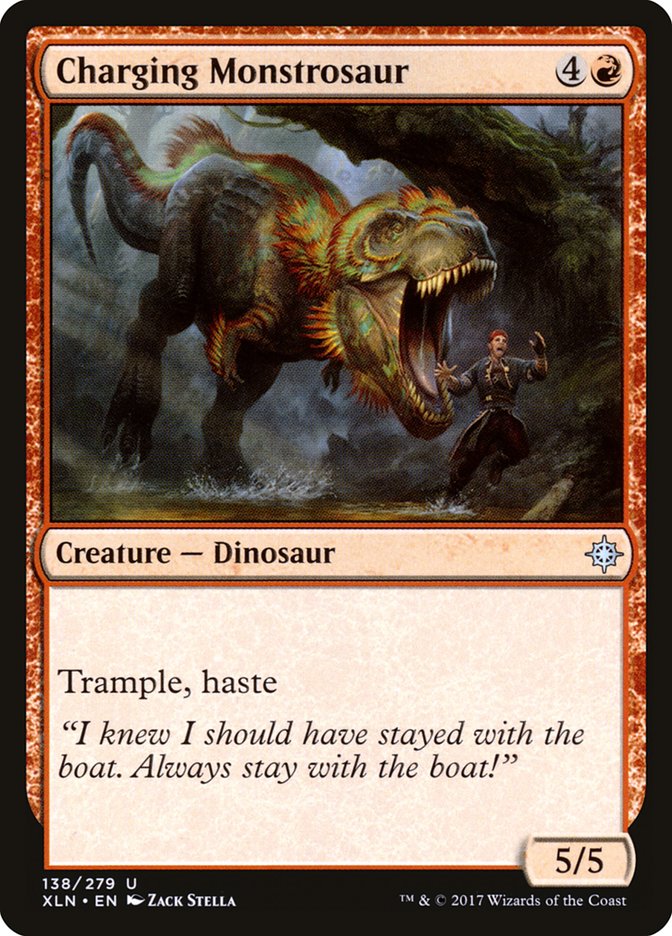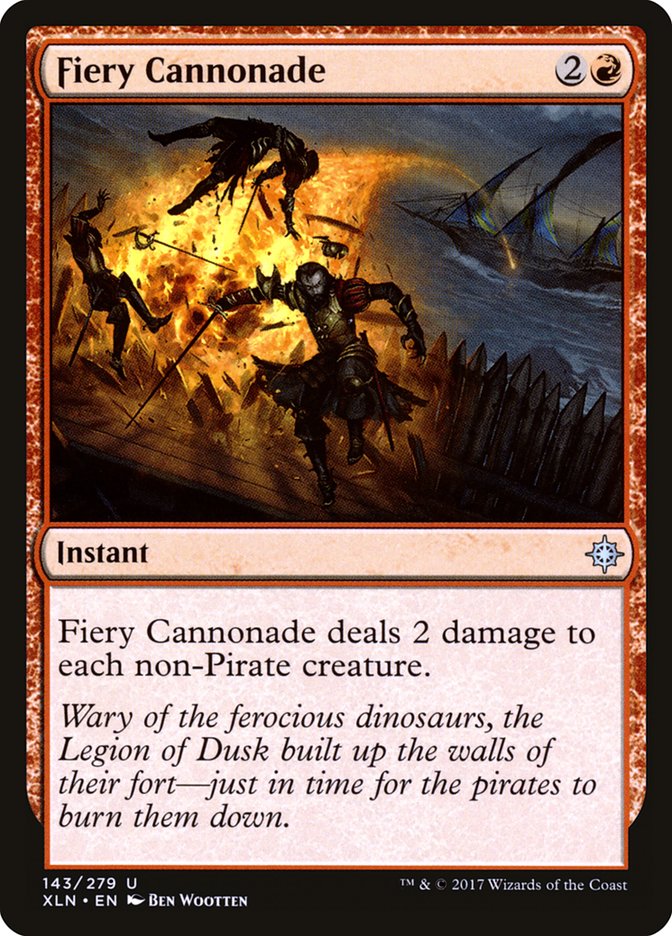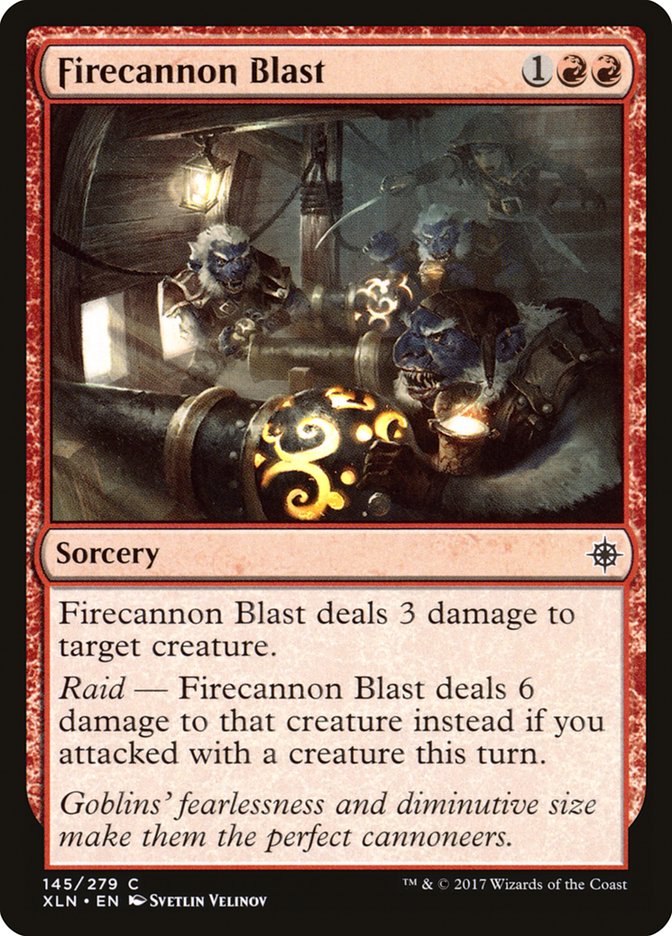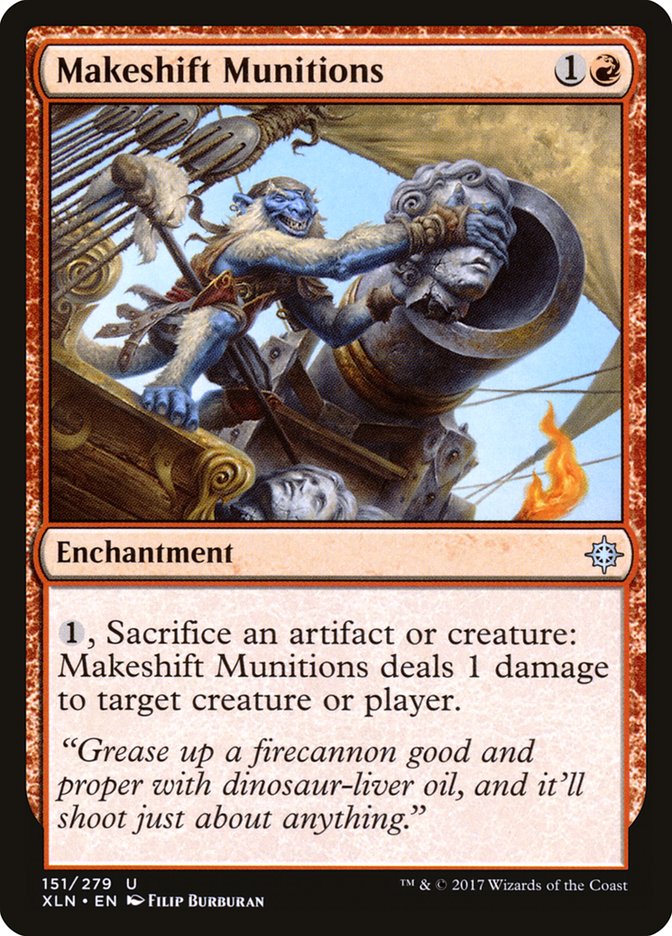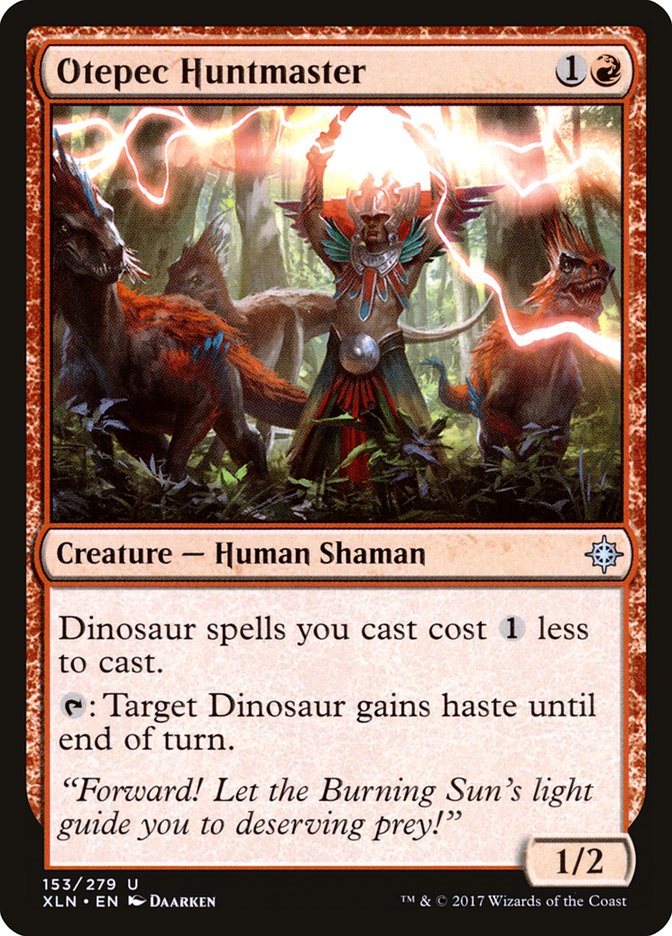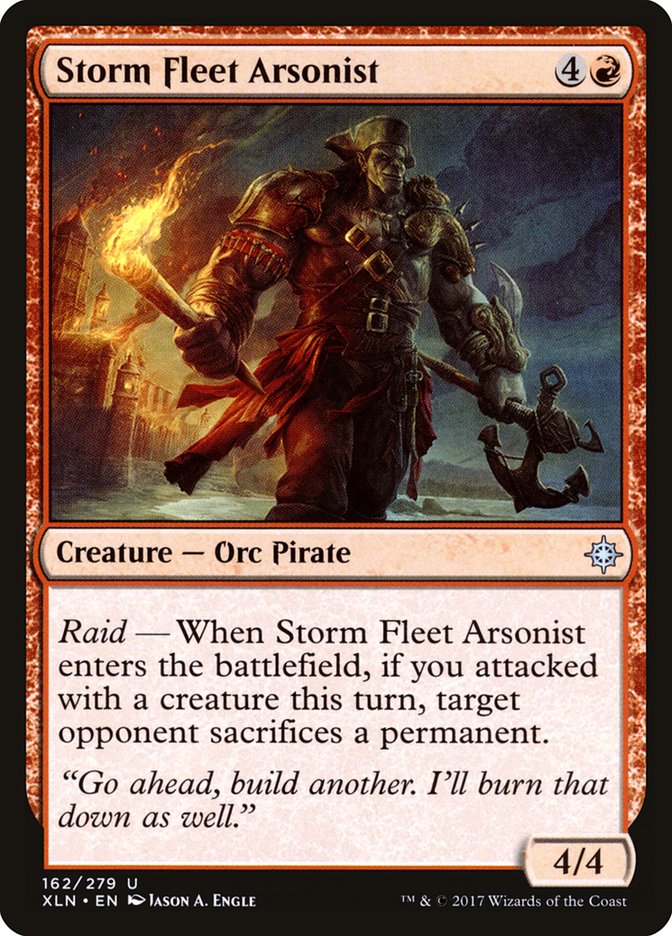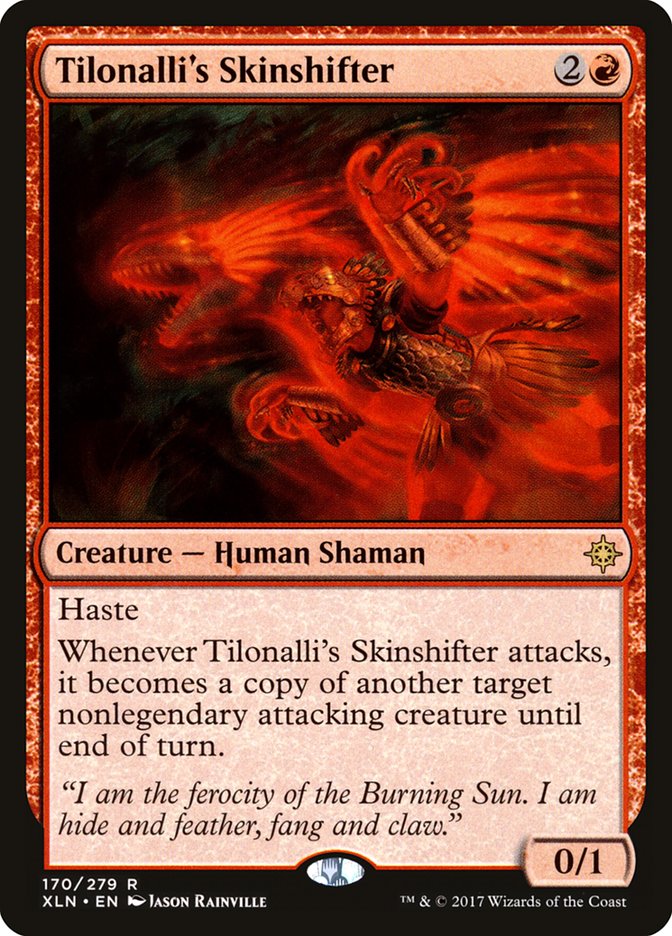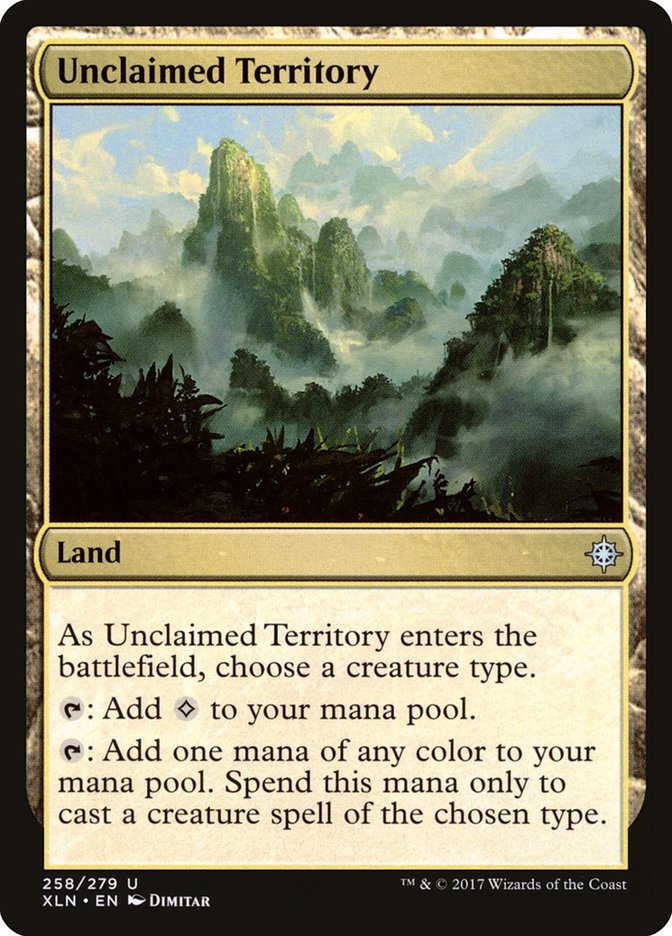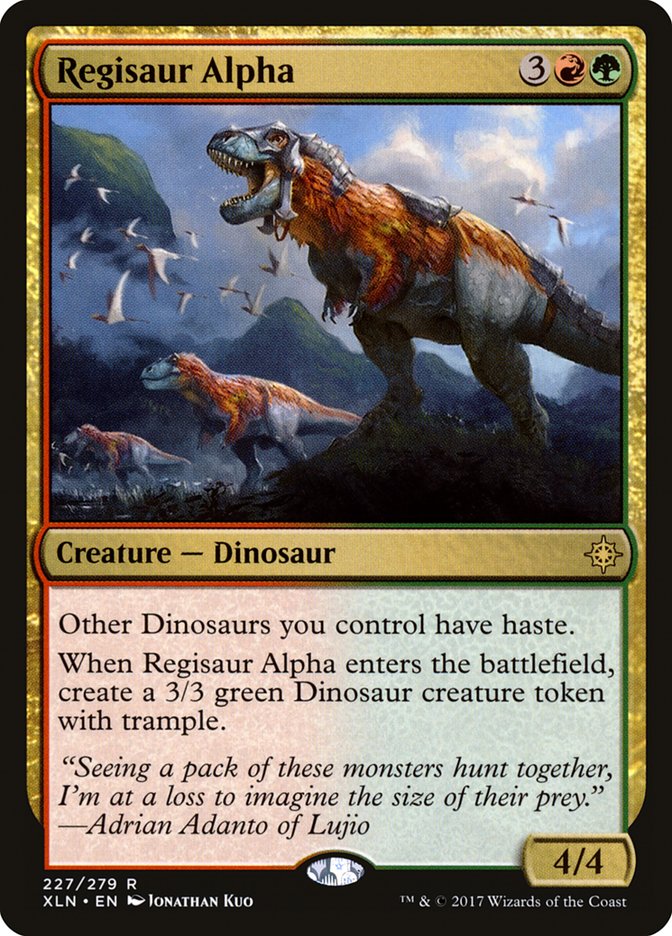When the last set came out, I wrote about how I was deeply hopeful for a resurgence in red. It came that very first weekend, pioneered by Jonathan Job.
Creatures (28)
- 2 Eldrazi Obligator
- 2 Reality Smasher
- 3 Thought-Knot Seer
- 4 Falkenrath Gorger
- 2 Kari Zev, Skyship Raider
- 2 Glorybringer
- 1 Hazoret the Fervent
- 4 Ahn-Crop Crasher
- 4 Soul-Scar Mage
- 4 Earthshaker Khenra
Planeswalkers (2)
Lands (24)
Spells (6)

Now, of course, there was a lot in Hour of Devastation to change the world. Earthshaker Khenra and Ramunap Ruins were the two big earthquakes that shook the land, but the potential for an actual red aggressive deck also opened the doors for a previously called killer card, Hazoret the Fervent, to actually emerge and show what it could do.
Let’s be frank:
There aren’t world-shaking cards like that in Ixalan.
Not for red decks, anyway. One big problem is that Hazoret the Fervent actually strongly limits how you can build a red deck; slower Big Red decks get devastated by a red creature that they can’t kill, and then the game can go all to hell. This places a lot of constraints onto what actually is going to matter and what won’t.
The new world of red is going to be a world of rotation. Fully four sets are rotating out. At the same time, one of the top decks in Standard is currently a mono-red deck, Ramunap Red. This puts Ixalan in an interesting position: red is one of the top dogs, so the bar is high, but with so many cards leaving, there are opportunities for cards to shine that might not otherwise.
It’s going to be interesting watching red develop in the coming weeks.
If you’ve not read my red reviews over the past many years, you should understand that they are focused on the concept of “red decks,” by which I mean those decks that are base-red instead of actively multicolor. B/R Aggro is not a red deck. Mardu is not a red deck. W/R Aggro is not a red deck. If a deck barely splashes and is, in essence, a red deck a la “R/x,” then it is in the realm of this review, but if it is a dedicated truly two-color deck, that isn’t the basis for what I’m looking at.
In other words, I’m not looking at “red cards” so much as I’m looking at how the red cards of Ixalan fit into a red deck.
Let’s start, as always, with the card to watch.
The Card to Watch
Like another “card to watch” from Magic Origins, Primal Amulet is an artifact and not a red card, but it very neatly fits into something that a red deck can go bonkers with.
Back in “The Magic Origins Red Review,” I lauded Pyromancer’s Goggles because of the incredible effects that you could have with it. It took a while, but eventually the card found its way to the top of the Pro Tour during Pro Tour Shadows over Innistrad.
Doubling a spell is a huge ability. While it takes a bit of work for a Primal Amulet to double a spell, the cost reduction effect is pretty huge. With cards like Cathartic Reunion and Tormenting Voice as possible fuel to flip Primal Amulet into Primal Wellspring, it actually feels like a red deck can do something really scary with this.
Note that a Primal Wellspring can potentially be responsible for more than a single copy of a spell. If you have two Primal Wellsprings involved in the casting of a spell, that makes for three copies of that original spell. In terms of payoffs, any burn spell, particularly one that goes to the head of the opponent, is a worthwhile card to use. Even fairly middling burn spells like Shock get intense when you get an extra copy just because!
While other colors are also going to enjoy Primal Amulet // Primal Wellspring, there is a huge home for the card in red.
The Excellent
Three damage for two mana as an instant is so much more powerful than as a sorcery. Being able to go right to an opponent’s head is deeply important. Now, with Shock and Lightning Strike, it won’t be surprising to see people simply die if they fall to single-digit life totals versus red. Abrade will likely see a little less play, and, if history is any judge, most red decks will either run four copies of Lightning Strike (if they think the card is worth it) or zero copies (if they don’t) as opposed to the twos and threes we’ve been seeing with Abrade and the rotating Incendiary Flow.
This card coming back is a big deal.
Menace is huge in an aggressive deck as is incidental damage. 3/3 for three isn’t crazily overpowered, but this card is very likely get in some licks. Shutting off lifegain won’t matter very often, but it will often enough to be a frustration for opponents. Much like River Boa’s original printing way back in the day, this has enough relevant abilities that altogether add up to a very relevant card.
The Good
The slow Hammer of Bogardan is a slow card, to be certain. However, repeatable damage is a big deal, and being able to withhold a decision about when to use it is also a big deal. For either a Big Red-style deck or as an option in a deck that is facing down a grind, this is a real card, and it will likely see play in small numbers.
Red is going to be on the hunt for one-drops. This card is another option to be looked at. While not great on turn 1, it is a solid card to play later in the game, and you’ll be able to accept that it will occasionally “just” be a 1/1, especially if it is a 2/2 as often as I expect it will be.
This card packs a powerful effect on both sides of the card. Outpost Siege is a very potent card, and even if you don’t get to make use of the land from Vance’s Blasting Cannons, it’s still a powerful ability. If you get to flip it into Spitfire Bastion, you will tear up a game. Still, the self-limiting nature of the card would make me likely never play more than one or two copies of the card.
Red is one of the best cards to make use of a piece of Equipment that can create the flip of this card. Making use of the Lost Vale will require a mana outlet of some size, but again, Big Red can probably find a way.
Another Big Red card, but with an important upside: Spires of Orazca can actually answer a Hazoret the Fervent. Consistently dropping mana is a big deal for a Big Red deck, and while a five-mana investment for that first land is a big deal, the payoff is huge for a controlling deck. Of all of the cards that could make Big Red be real rather than fantasy, this might be the one.
Put one more card in the Big Red camp. This card can be a huge engine to fuel such a deck, albeit with a payoff that is largely just more fuel for a grind rather than providing the kind of answer that solves big problems, like fast or hard-to-answer creatures.
The Sideboard Cards
Normally I would have put this in my “The Unimportant” category below, because the card already exists, but it exists in Shadows over Innistrad, so it will be rotating out – thankfully to be replaced by the new version! This card is among many cards that I’ve looked at sideboarding in a world where red aggro is a big deal. This card is cheap and can be a powerful means to stunt the early damage from an opposing red deck.
While cards like Earthshaker Khendra and Repeating Barrage exist, for the most part, the graveyard is occasionally something you want to answer. Sentinel Tower is a very effective means to do so.
Whether it is a planeswalker, a Bristling Hydra, or any other difficult card, Sorcerous Spyglass could be leaned on to take care of otherwise hard-to-answer problems.
The Role-Players
This card requires games to go to a long, drug-out place, where both players have creatures that are relevant. In that world, this could be effective, but it is an expensive card to find a payoff for.
If you can find the time to crew this and attack, you are going to be able to pull way the hell ahead. At 2/10, you’ll also be able to use it reasonably for defense. However, crew 4 pushes this into the “hard to use” category.
Keep it simple, indeed. This card is solid, but is it a card that one needs in Standard? Ramunap Ruins is one of the only cards you might want to answer, and this is a little unwieldy at doing so.
I actually like this card a fair amount for Big Red. The extra life isn’t much, but it can make the difference in surviving long enough to play your bigger spells, and the life loss for the opponent can make the card a part of ending a game. Even this might be underselling the card; as is, a lot of cards are competing for this role, and this is a fairly undramatic version of this effect.
This is actually a cute little card in a race, especially if it can kill a creature while it dies. Dropping this down against another aggressive deck could shift a tide early in a game.
This card is awesome, but it isn’t necessarily great. If you’re mana-flooded or are needing more mana, drawing random cards and discarding is a powerful ability, but for four mana, the likely 3/3 body is not the most exciting payoff even if the card replaces itself. A graveyard-heavy red deck or a deck with a heavier top-end might enjoy Rowdy Crew, but probably a lot of work needs to be done to make this card function.
I love this card for a lot of reasons. At seven mana, though, it is a shame that it will kill the easiest way to cast it: Chandra, Torch of Defiance. Star of Extinction also doesn’t do very much to Gods, and so this card is relegated to “role-player,” but it is legitimately worth thinking about nonetheless.
Another option for the Big Red archetype, this card has a pseudo-Fork ability that is going to be a huge deal when it is on the battlefield. Effects like this (Metallurgic Summonings comes to mind) are always far more powerful than you realize until the first time you make use of it. It would be better if it wasn’t doubly limited (search the top X and be X-cost or less), but it is still a very potent card in a grind.
Once again, in Big Red, this seems like a decent way to build up mana for a big spell, and if you get the payoff of eating a creature, so much the better. However, it will be hard to find a deck that can accomplish both to make this card worth it.
If this card were a 2/2, it would be too good. As it is, the 1/1 body building into a bigger spell had better be doing something incredibly impressive.
The Marginal
Six is a lot of mana. This would be great at five, or great if it did just a little more. Probably you need dinosaurs to matter for this to be playable.
At first glance, this looks like a real card. When you think about how it is likely to just march into death, that thought disappears really quickly.
While this will certainly be a Limited monster, it is right on the cusp of being relevant in Constructed – if you can find extra payoffs, it could well go over the “not quite good enough” hump.
There are a lot of non-Pirates out there that need killing; if you’re creature-light and three-toughness- or Pirate-heavy, this could be playable.
For the desperate trying to kill a big creature, this might do it, recognizing that you probably lost a creature to make this card “work.”
Not Goblin Bombardment, this card is going to need massive token or creature generation to really feel like it’s good enough.
Are there enough actually good Dinosaurs? I think we’re still short.
A lot needs to go right for this card to be good. You need the game to be about a very tight grind where you can afford to be attacking and every resource the opponent has matters. Is that all true? Then this is playable.
This card requires a lot of help to really be awesome. You need something worthy of copying, that card has to already be able to attack, and then you need to be in the position to attack. Rough.
The Unimportant
These are cards that I don’t expect to have any impact on Standard because they are so outclassed or they are reprints.
The Splash
These three lands could be used to help justify a slight splash into another color. Unclaimed Territory will basically require that both your splashed color be able to make use of the land and that you have enough correct creatures for it to work in your main color. Probably this won’t happen. The other two lands work quite well to support a second color splash.
Where Raging Sawtooth feels like it might be the kind of card you could sideboard as a splash, Regisaur Alpha feels like the type of card that you could decide is worth putting the tiniest amount of green into your deck for. It isn’t just seven power for five mana; haste makes cards like Rampaging Ferocidon and Burning Sun’s Avatar more worthy of consideration.
More interesting, though, is casting a second Regisaur Alpha. Ouch.
The Conclusion
Here’s one simple conclusion:
Lightning Strike is going to be a ubiquitous card in the coming Standard. This card will mean that the effective reach of red decks will be just slightly that much more – an instant is easier to make use of than a sorcery by a great deal. Four toughness is suddenly slightly more important.
Rigging Runner might be one of the go-to cards for the new aggressive red, or otherwise, it might just decide not to run as many one-drops as it used to have.
For the rest of the possibilities that emerge, there are a ton of weapons for slower red decks, with Thaumatic Compass // Spires of Orazca being one of the most noteworthy because of the ability of the card to help handle problematic cards like Hazoret the Fervent. Whether there is enough to bring Big Red over the top remains to be seen.
Sideboarding for red decks of all stripes is going to be more resilient, with broad answers now available due to Sorcerous Spyglass and Sentinel Totem.
SCG Dallas will be the first stop to feature Ixalan and it will feature it in Standard. I’m certain that the faster aggressive red will maintain its strength, but perhaps we finally have enough tools for that Big Red deck. Stay tuned until September 30th to find out in Dallas!
In the meantime, I know I’ll be tinkering away with Primal Amulet in red decks and others. If I have my way, you can expect me to be copying burn spells and killing people!


